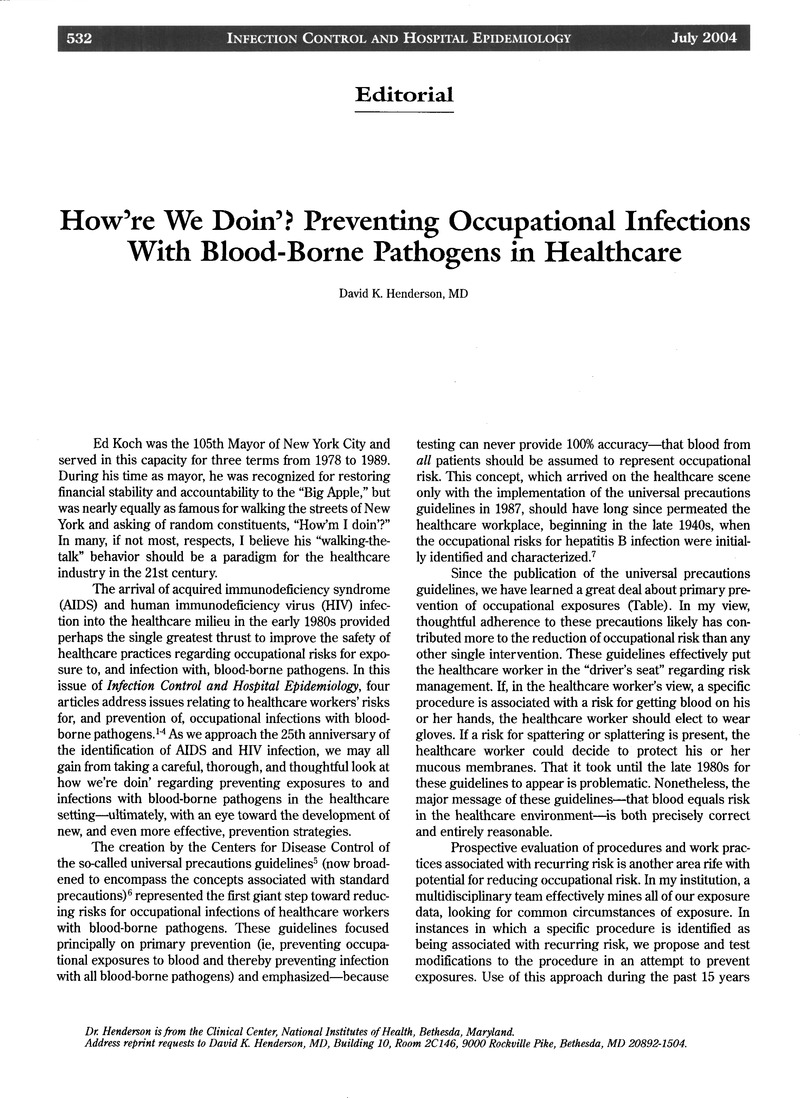Crossref Citations
This article has been cited by the following publications. This list is generated based on data provided by Crossref.
Beekmann, Susan E
and
Henderson, David K
2005.
Protection of healthcare workers from bloodborne pathogens.
Current Opinion in Infectious Diseases,
Vol. 18,
Issue. 4,
p.
331.
van Gemert-Pijnen, J.
Hendrix, M.G.R.
Van der Palen, J.
and
Schellens, P.J.
2006.
Effectiveness of protocols for preventing occupational exposure to blood and body fluids in Dutch hospitals.
Journal of Hospital Infection,
Vol. 62,
Issue. 2,
p.
166.
van Wijk, P.Th.L.
Pelk-Jongen, M.
Wijkmans, C.
Voss, A.
and
Schneeberger, P.M.
2006.
Quality control for handling of accidental blood exposures.
Journal of Hospital Infection,
Vol. 63,
Issue. 3,
p.
268.
Boal, Winifred L.
Leiss, Jack K.
Sousa, Sara
Lyden, Jennifer T.
Li, Jia
and
Jagger, Janine
2008.
The National study to prevent blood exposure in paramedics: Exposure reporting.
American Journal of Industrial Medicine,
Vol. 51,
Issue. 3,
p.
213.
2008.
Determination of Risk of Infection with Blood-borne Pathogens Following a Needlestick Injury in Hospital Workers.
The Annals of Occupational Hygiene,
Knapp, Megan Bush
Grytdal, Scott P.
Chiarello, Linda A.
Sinkowitz-Cochran, Ronda L.
Zombeck, Andrea
Klein, Cynthia
Warden, Beverly
Lyden, Jennifer
and
Pearson, Michele L.
2009.
Evaluation of institutional practices for prevention of phlebotomy-associated percutaneous injuries in hospital settings.
American Journal of Infection Control,
Vol. 37,
Issue. 6,
p.
490.
Mashoto, Kijakazi O
Mubyazi, Godfrey M
Makundi, Emmanuel
Mohamed, Hussein
and
Malebo, Hamisi M
2013.
Estimated risk of HIV acquisition and practice for preventing occupational exposure: a study of healthcare workers at Tumbi and Dodoma Hospitals, Tanzania.
BMC Health Services Research,
Vol. 13,
Issue. 1,



